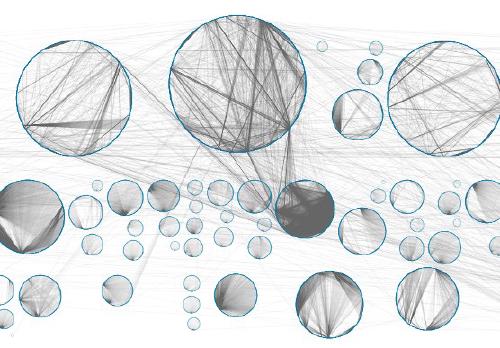
Maud Fagny
The structure of gene regulatory networks help us understand how complex traits and diseases are inherited and evolve
Many human traits are polygenic, i.e. determined by several genes and regulatory elements, such as size at adulthood, metabolism, immunity, genetic predisposition to many diseases, including a lot of cancers and auto-immune diseases, psychiatric disorders, and neurodegenerative diseases. These genes are often pleiotropic, involved in different traits at once. This is due to the high amount of interactions that takes place at the molecular level in each cell, where complex networks tightly regulate the way genes are expressed. Given the many intertwined genetic bases between complex traits, we wondered how complex traits can differ between individuals and evolve in response to environmental constraints.
We systematically analyzed the distribution of heritability for 11 traits across 29 tissue-specific mutation-gene networks. We showed how their highly modular structure, delineating subnetworks loosely connected with each other, and rewired in each tissue or cell type, can both amplify the effect of a group of mutations on one trait, while buffering their deleterious effect on the other related traits. We thus explain how complex traits have been able to evolve in response to environmental constraints. Together, these results provide a conceptual framework for understanding complex trait architecture and evolution, and could be used to improve disease risk predictions.
Read the article in Molecular Biology and Evolution and HAL.
Contact : Maud Fagny (maud.fagny@inrae.fr)
